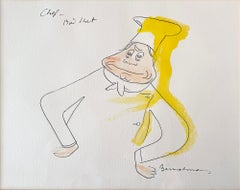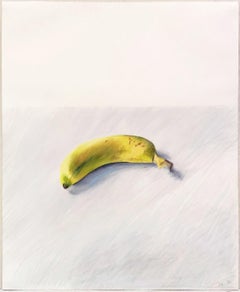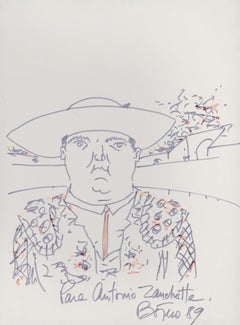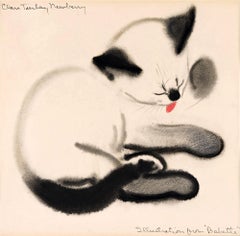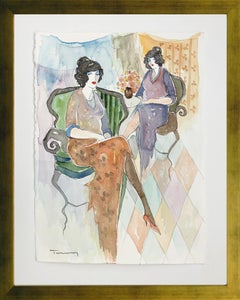Miami - Portrait Drawings and Watercolors
1960s Outsider Art Miami - Portrait Drawings and Watercolors
Ink, Gouache, Archival Paper, Pen
1980s Pop Art Miami - Portrait Drawings and Watercolors
Paper, Crayon, Pastel
Late 20th Century Contemporary Miami - Portrait Drawings and Watercolors
Laid Paper, Permanent Marker
1930s American Impressionist Miami - Portrait Drawings and Watercolors
Paper, Crayon, Watercolor, Pencil
Late 20th Century Contemporary Miami - Portrait Drawings and Watercolors
Paper, Watercolor
1910s Miami - Portrait Drawings and Watercolors
Silver
1980s Contemporary Miami - Portrait Drawings and Watercolors
Paper, Ink, Watercolor, Gouache
1920s Conceptual Miami - Portrait Drawings and Watercolors
Ink, Color Pencil, Graphite
1910s Art Nouveau Miami - Portrait Drawings and Watercolors
Paper, India Ink
1950s Outsider Art Miami - Portrait Drawings and Watercolors
Ink, Watercolor
Early 1900s Art Nouveau Miami - Portrait Drawings and Watercolors
Ink, Watercolor, Pencil
1910s American Realist Miami - Portrait Drawings and Watercolors
Acrylic Polymer, Gouache, Pencil, Watercolor
1920s Miami - Portrait Drawings and Watercolors
Paper, Ink, Watercolor
Late 20th Century Contemporary Miami - Portrait Drawings and Watercolors
Paper, Watercolor
20th Century Conceptual Miami - Portrait Drawings and Watercolors
Paper, Ink
1950s American Modern Miami - Portrait Drawings and Watercolors
Ink, Watercolor, Archival Paper
1920s Surrealist Miami - Portrait Drawings and Watercolors
India Ink, Board, Pencil
Late 20th Century Contemporary Miami - Portrait Drawings and Watercolors
Paper, Watercolor
1970s Modern Miami - Portrait Drawings and Watercolors
Paper, Mixed Media, Watercolor
Early 1900s Art Nouveau Miami - Portrait Drawings and Watercolors
Ink, Illustration Board, Pen
1930s Art Nouveau Miami - Portrait Drawings and Watercolors
Watercolor, Ink, Illustration Board
1930s Art Nouveau Miami - Portrait Drawings and Watercolors
Ink, Pencil
1970s American Modern Miami - Portrait Drawings and Watercolors
Watercolor, Pen, Pencil, Paper
1930s American Impressionist Miami - Portrait Drawings and Watercolors
India Ink, Board
1940s Academic Miami - Portrait Drawings and Watercolors
Ink, Board
Early 1900s Victorian Miami - Portrait Drawings and Watercolors
Ink, Watercolor, Gouache, Board
1910s American Impressionist Miami - Portrait Drawings and Watercolors
India Ink, Watercolor, Board
2010s Conceptual Miami - Portrait Drawings and Watercolors
Paper, Watercolor, Ink
1910s Cubist Miami - Portrait Drawings and Watercolors
Paper, India Ink, Color Pencil
1940s Academic Miami - Portrait Drawings and Watercolors
Ink, Pencil
1910s Art Deco Miami - Portrait Drawings and Watercolors
India Ink
1890s Pre-Raphaelite Miami - Portrait Drawings and Watercolors
Paper, Ink, Pen
Early 1900s Art Nouveau Miami - Portrait Drawings and Watercolors
Paper, Ink, Watercolor
1980s Contemporary Miami - Portrait Drawings and Watercolors
Watercolor, Pencil
Early 1900s Romantic Miami - Portrait Drawings and Watercolors
Paper, Pen, Ink
1940s Contemporary Miami - Portrait Drawings and Watercolors
Watercolor, Pencil
1920s American Modern Miami - Portrait Drawings and Watercolors
Ink, Pen
1920s Art Deco Miami - Portrait Drawings and Watercolors
Paper, Ink
1950s English School Miami - Portrait Drawings and Watercolors
Ink, Pen
1930s Art Deco Miami - Portrait Drawings and Watercolors
Paper, Ink, Watercolor
1940s Art Deco Miami - Portrait Drawings and Watercolors
Ink, Watercolor
1980s American Realist Miami - Portrait Drawings and Watercolors
Watercolor
1980s Outsider Art Miami - Portrait Drawings and Watercolors
Paper, Ink, Watercolor
1940s Art Deco Miami - Portrait Drawings and Watercolors
Watercolor, Gouache
1970s Modern Miami - Portrait Drawings and Watercolors
Watercolor
1980s Art Deco Miami - Portrait Drawings and Watercolors
Gouache, Pencil
Late 20th Century Contemporary Miami - Portrait Drawings and Watercolors
Paper, Watercolor
1930s Romantic Miami - Portrait Drawings and Watercolors
Ink, Watercolor, Pencil
1940s Feminist Miami - Portrait Drawings and Watercolors
Watercolor
1930s Academic Miami - Portrait Drawings and Watercolors
Ink, Watercolor, Board
1980s Modern Miami - Portrait Drawings and Watercolors
Mixed Media, Laid Paper
1980s Contemporary Miami - Portrait Drawings and Watercolors
Watercolor, Pencil, Paper
1960s Contemporary Miami - Portrait Drawings and Watercolors
Watercolor, Permanent Marker, Carbon Pencil
1930s Art Deco Miami - Portrait Drawings and Watercolors
Watercolor, Gouache
1930s Art Deco Miami - Portrait Drawings and Watercolors
Watercolor
1930s American Modern Miami - Portrait Drawings and Watercolors
Paper, Ink, Watercolor
1910s Academic Miami - Portrait Drawings and Watercolors
Paper, Charcoal
Early 1900s American Modern Miami - Portrait Drawings and Watercolors
Paper, Watercolor
Mid-20th Century Pop Art Miami - Portrait Drawings and Watercolors
Paper, Watercolor, Graphite
Late 20th Century Contemporary Miami - Portrait Drawings and Watercolors
Paper, Mixed Media
